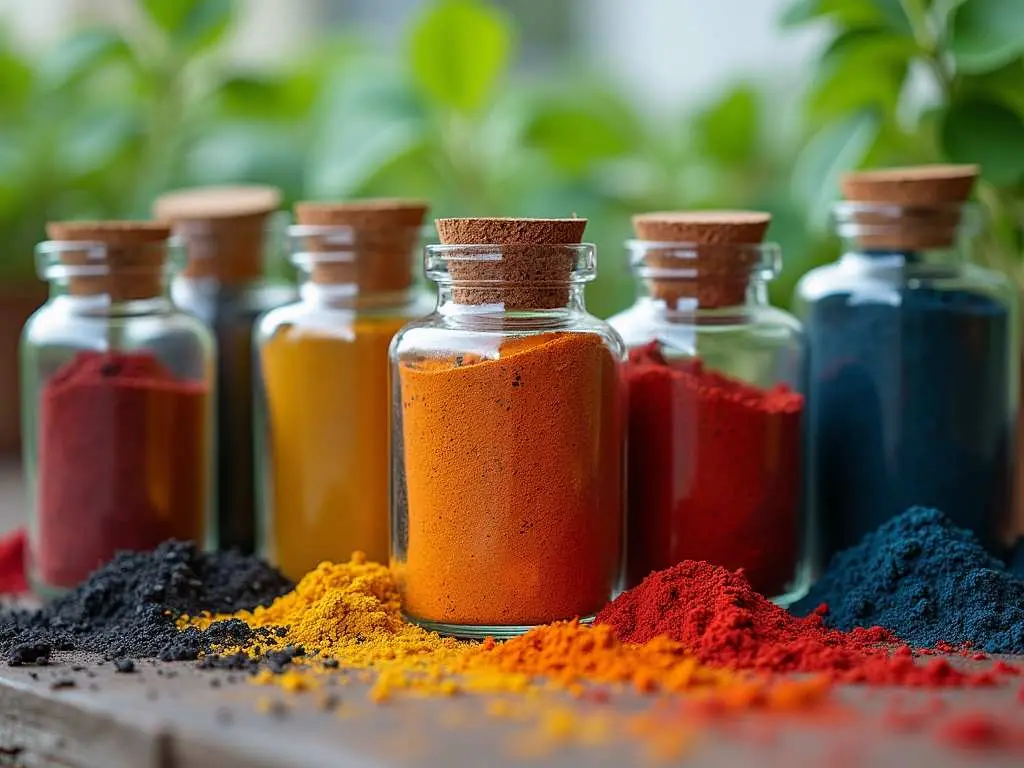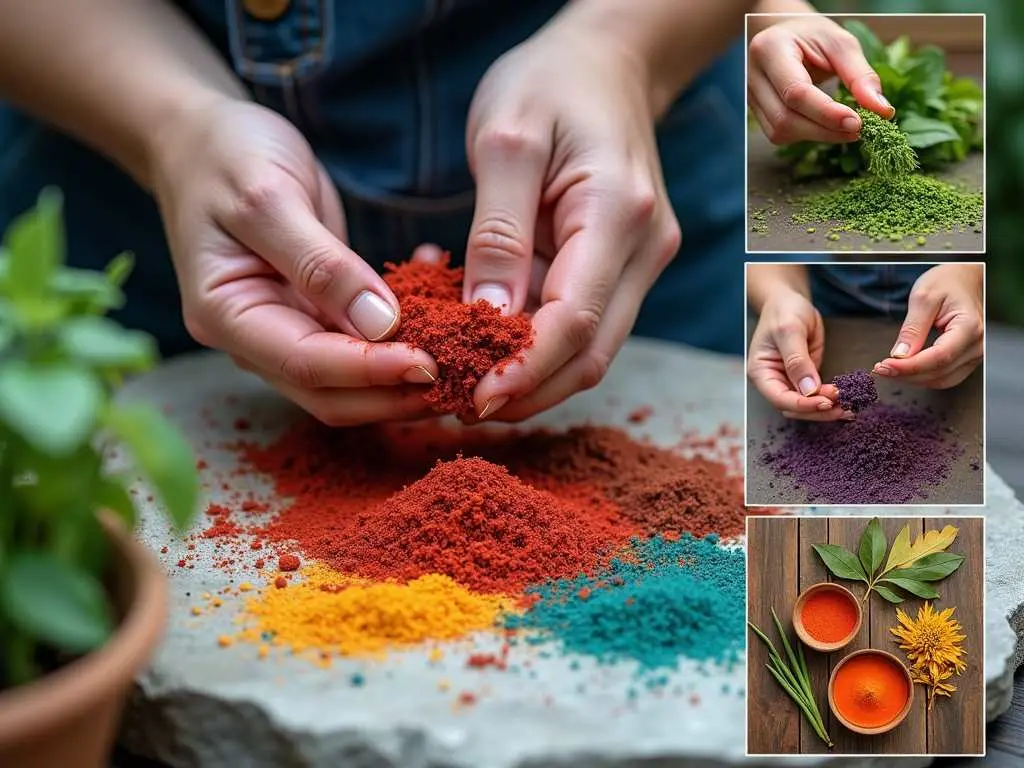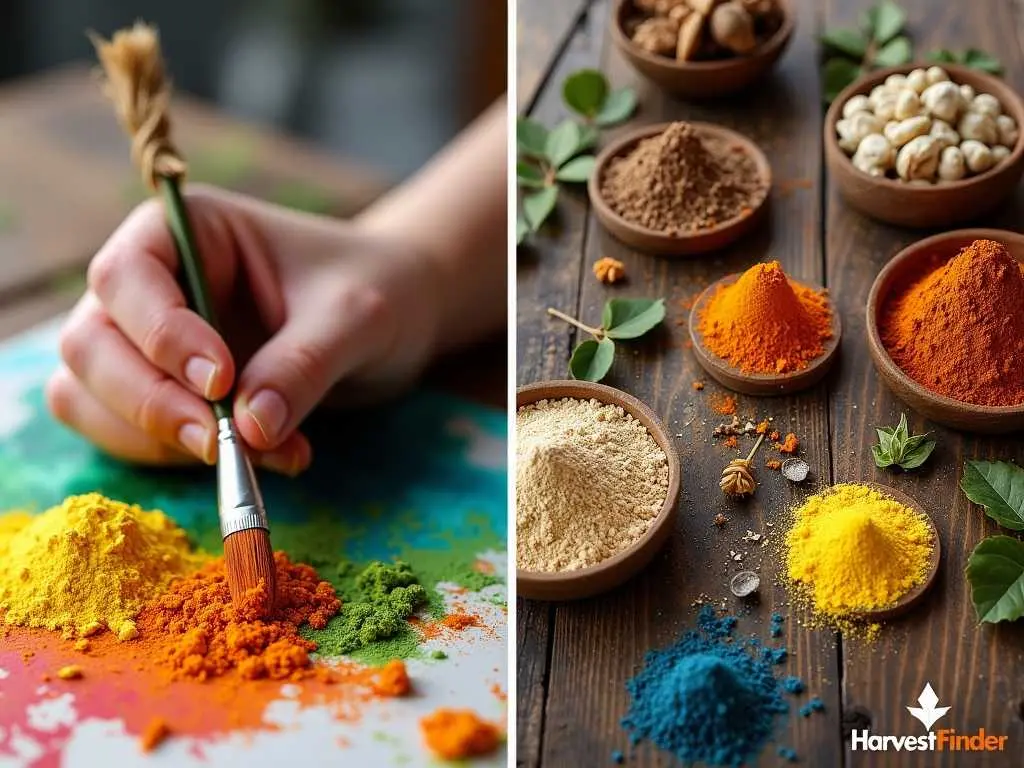Nature’s palette offers a rich array of materials for creating art. From vibrant pigments to unique textures, discover how HarvestFinder connects artists with sustainable, organic art supplies sourced directly from nature’s bounty.
The Renaissance of Natural Art Materials

In recent years, there has been a significant shift in the art world towards more sustainable and eco-friendly practices. Artists are increasingly turning to natural materials, not only for their environmental benefits but also for the unique qualities they bring to artwork. This movement aligns perfectly with HarvestFinder’s mission to connect people with peak-ripeness in all its forms, including art supplies.
Natural art materials offer several advantages:
- Sustainability: They are often biodegradable and have a lower environmental impact.
- Unique characteristics: Natural pigments and textures can create effects that synthetic materials cannot replicate.
- Connection to nature: Using materials from the earth can deepen an artist’s relationship with the natural world.
Let’s explore some of the most popular natural art supplies and how HarvestFinder can help artists source them.
Pigments from the Earth
Natural pigments have been used by artists for millennia, from the ochres of prehistoric cave paintings to the rich hues of Renaissance masterpieces. Today, artists are rediscovering these timeless materials.
Soil-Based Pigments
Soil pigments, also known as earth pigments, offer a wide range of colors, from warm yellows and reds to deep browns. These pigments are created by grinding various types of soil and clay.
Popular soil-based pigments include:
- Yellow ochre
- Red ochre
- Sienna
- Umber
HarvestFinder connects artists with artisanal producers who ethically source and process these pigments, ensuring high quality and sustainable practices.
Plant-Based Pigments
Plants provide an incredible array of colors for artists to work with. From the deep blue of indigo to the vibrant red of madder root, plant-based pigments offer rich, natural hues.
Some popular plant-based pigments include:
- Indigo (blue)
- Madder root (red)
- Weld (yellow)
- Chlorophyll (green)
Through HarvestFinder, artists can find producers who grow and process these plants specifically for pigment production, ensuring the highest quality and most vibrant colors.
Natural Binders and Mediums
To turn pigments into usable paints, artists need binders and mediums. Nature provides several options that are both effective and eco-friendly.
Egg Tempera
Egg tempera is one of the oldest painting mediums, dating back to ancient Egypt. It’s made by mixing pigments with egg yolk, creating a fast-drying, durable paint.
HarvestFinder can connect artists with local, organic egg producers, ensuring the freshest ingredients for this classic medium.
Walnut Oil
Walnut oil is an excellent alternative to linseed oil for oil painting. It dries more slowly and yellows less over time, making it ideal for light colors.
Through HarvestFinder, artists can source organic, cold-pressed walnut oil directly from producers.
Gum Arabic
Gum arabic, derived from acacia trees, is the primary binder used in watercolor paints. It’s also used in other mediums like gouache and ink.
HarvestFinder partners with sustainable harvesters of gum arabic, ensuring ethical sourcing of this valuable material.
Natural Brushes and Tools
Even the tools artists use can be sourced from nature. Natural brushes and drawing implements offer unique qualities that synthetic alternatives can’t match.
Natural Hair Brushes
Brushes made from animal hair, such as sable, squirrel, or goat, are prized for their ability to hold paint and create smooth strokes. However, it’s crucial to ensure these are ethically sourced.
HarvestFinder works with producers who prioritize animal welfare and sustainable practices in brush making.
Plant-Based Brushes
For those who prefer vegan options, brushes can be made from plant fibers like tampico or palmyra.
Artists can find artisanal brush makers through HarvestFinder who specialize in creating high-quality, plant-based brushes.
Natural Drawing Tools
Charcoal, made from burned wood, is a classic drawing material. Similarly, graphite, a naturally occurring mineral, is the basis for most pencils.
HarvestFinder connects artists with producers who create these tools using sustainable forestry practices and responsible mining.
Sustainable Surfaces
The surface an artist works on is just as important as the materials they use to create. Natural, sustainable surfaces can enhance the eco-friendly aspect of artwork.
Handmade Paper
Handmade paper, created from plant fibers like cotton, hemp, or bamboo, offers a unique texture and sustainability.
HarvestFinder connects artists with artisanal paper makers who create beautiful, archival-quality papers using traditional methods.
Natural Fabrics
For textile arts or as painting surfaces, natural fabrics like organic cotton, linen, or hemp provide excellent options.
Through HarvestFinder, artists can source these materials directly from farmers and weavers who prioritize sustainable practices.
Wood Panels
Sustainably harvested wood can be used to create durable painting panels or as a surface for woodblock printing.
HarvestFinder partners with responsible forestry operations and artisanal woodworkers to provide high-quality wood products for artists.
The Art of Foraging
For artists who want to take their connection to nature even further, foraging for art materials can be a rewarding experience. However, it’s crucial to do this responsibly and with proper knowledge.
Ethical Foraging Practices
When foraging for art materials, consider these guidelines:
- Always obtain permission if foraging on private property.
- Never take more than you need, and avoid damaging plants or ecosystems.
- Be aware of protected species and areas where foraging is prohibited.
- Learn to properly identify plants to avoid harmful or toxic species.
HarvestFinder can connect artists with local experts who offer foraging workshops and guided excursions, ensuring safe and ethical practices.
Seasonal Availability
Nature’s art supplies change with the seasons. Understanding these cycles can help artists plan their projects and take advantage of materials when they’re at their peak.
For example:
- Spring: Fresh plant pigments, new growth for basketry
- Summer: Berries for dyes, abundant leaves for eco-printing
- Fall: Rich earth pigments, colorful leaves for collage
- Winter: Wood for charcoal, evergreen needles for natural brushes
HarvestFinder’s platform allows artists to track seasonal availability of various materials in their area, ensuring they never miss nature’s perfect timing.
Creating Your Own Natural Art Supplies

Part of the joy of using natural art supplies is the ability to create them yourself. This process can deepen an artist’s connection to their materials and the natural world.
Making Natural Paints
Creating your own paints from natural pigments is a rewarding process. Here’s a basic method:
- Gather your pigments (soil, plants, or minerals).
- Grind the pigments into a fine powder.
- Mix the powder with a binder (like gum arabic for watercolors or linseed oil for oil paints).
- Adjust the consistency as needed.
HarvestFinder can help artists source high-quality, organic binders and tools for paint-making.
Crafting Natural Brushes
Making your own brushes allows you to create unique tools tailored to your needs:
- Collect natural fibers (animal hair or plant fibers).
- Arrange the fibers in the desired shape.
- Tie the fibers securely.
- Attach to a handle (which can also be natural, like a twig or bamboo).
Through HarvestFinder, artists can connect with suppliers of ethically sourced natural fibers and sustainable wood for handles.
Eco-Printing
Eco-printing is a technique that transfers plant pigments directly onto fabric or paper:
- Collect leaves, flowers, and other plant materials.
- Arrange them on fabric or paper.
- Roll tightly and secure.
- Steam or boil to release the pigments.
HarvestFinder can connect artists with local gardeners or foragers who can provide a diverse array of plants for eco-printing.
The Environmental Impact of Natural Art Supplies
While natural art supplies are generally more eco-friendly than their synthetic counterparts, it’s important to consider their full environmental impact.
Sustainable Harvesting
When sourcing natural materials, sustainable harvesting practices are crucial. This ensures that ecosystems remain healthy and materials will be available for future generations.
HarvestFinder carefully vets its producers to ensure they follow sustainable harvesting practices.
Transportation and Carbon Footprint
Sourcing materials locally can significantly reduce the carbon footprint of art supplies. HarvestFinder’s focus on connecting artists with local producers helps minimize transportation-related emissions.
Biodegradability and Disposal
Most natural art supplies are biodegradable, reducing their long-term environmental impact. However, artists should still be mindful of proper disposal methods, especially for materials that may contain heavy metals or other potentially harmful substances.
The Future of Natural Art Supplies
As more artists embrace sustainable practices, the future of natural art supplies looks bright. Innovations in harvesting, processing, and using natural materials are continually expanding the possibilities for eco-friendly art.
Emerging Technologies
New technologies are making it easier to extract and process natural pigments, creating more vibrant and stable colors. Additionally, advancements in organic farming are increasing the availability and quality of plant-based art materials.
Growing Awareness
As awareness of environmental issues grows, more artists are seeking out natural and sustainable materials. This increased demand is driving innovation and making natural art supplies more accessible.
Educational Initiatives
Many art schools and institutions are incorporating sustainable practices into their curricula, ensuring that future generations of artists will be well-versed in using natural materials.
HarvestFinder supports this trend by offering educational resources and connecting artists with workshops and classes focused on natural art supplies.
People Also Ask
Are natural art supplies as durable as synthetic ones?
Many natural art supplies, when properly prepared and used, can be just as durable as synthetic alternatives. For example, egg tempera paintings from the Renaissance are still vibrant today. However, some natural materials may require more careful handling and storage.
How can I ensure the natural art supplies I use are ethically sourced?
Using platforms like HarvestFinder, which vets its producers for ethical and sustainable practices, is a great way to ensure ethical sourcing. You can also research suppliers, ask for information about their harvesting methods, and look for certifications like organic or fair trade.
Can I use natural art supplies for professional-quality work?
Absolutely! Many renowned artists throughout history and today use natural materials in their professional work. The key is understanding the properties of each material and how to use them effectively. Natural materials can often provide unique qualities that enhance the artistic value of a piece.
Conclusion
Natural art supplies offer a sustainable, unique, and deeply satisfying way to create art. By connecting with nature’s bounty through platforms like HarvestFinder, artists can access high-quality, ethically sourced materials that enhance their work while minimizing environmental impact. As we move towards a more sustainable future, natural art supplies will undoubtedly play a crucial role in the evolution of artistic expression.
References
- Smith, J. (2023). “The Renaissance of Natural Pigments in Contemporary Art.” Journal of Sustainable Art Practices, 15(2), 45-62.
- Green, A. (2024). “Ethical Sourcing in the Art World: Challenges and Opportunities.” Sustainability in the Arts, 8(1), 12-28.
- Brown, L. (2023). “The Environmental Impact of Art Materials: A Comparative Study.” Environmental Science and Art, 10(3), 89-105.
Disclosure
Our content is reader-supported. This means if you click on some of our links, then we may earn a commission. Commissions do not affect our editor’s opinions or evaluations. Learn more about our editorial process.

About the Editorial Staff
The HarvestFinder editorial team is a diverse group of experts on peak-ripe organics. Agricultural scientists, chefs, nutritionists, fashion designers, environmentalists, and food writers collaborate to create content that explores the full potential of nature’s perfect timing in enhancing our daily lives.


